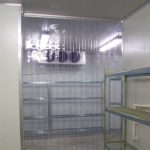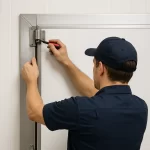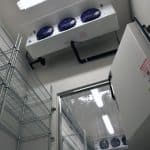Is There a Recommended Thickness for PVC Plastic Strip Curtains?
- 16 November 2018
Because of the cold application areas and visibility issues, PVC curtain thickness is decided by a “Goldilocks” styled design approach. If the material is too thick, it becomes opaque. An approaching member of staff can’t see what’s going on beyond the plastic strips. Furthermore, the material becomes rigid and hard to push aside when it’s so dense. Manufactured too thin, though, then the curtains no longer insulate or isolate.
Coolroom PVC Curtains: The Goldilocks Width
Not to be confused with bear-filled fairy tales or astronomy, the goal is to produce a curtain that’s not too thick or too thin. The flexible, transparent plastic should be heavy-duty in name, but it still needs to yield easily when someone or something needs to push through the strips. As soon as a trolley, forklift or staff member does pass through the curtains, they’ll quickly settle back into place. Thanks to that design, dust and insects, free-floating dirt and all the rest of the cross-contaminating pollutants are held back, just like the designer intended.
Cold Room Curtain Dimensions: Recommended Thickness
The PVC slats drop from ceiling to floor, and they move all the way from one threshold wall to the other. The coolroom portal is protected. Looking at a PVC thickness chart, let’s make a few key decisions before going any further. For construction needs and other heavy-duty applications, the chart suggests 10mm thick sheets. This stuff won’t hole easily, not even if a sharp-edged construction rod is sticking out of a material pile. Moving down a level from the toughened sheets, we’re going to opt for 6mm thick curtain strips. This depth is transparent and flexible, so it’ll be easy to see what’s going on behind the strips, plus they’ll bounce back together to stop cross-contaminants.
Undercutting the Recommended Plastic Depth
Down as low as 1.5mm, PVC curtains still function properly. Only, armed with such slight substance, this material is no longer suitable as a factory or warehouse mounting option. One solid impact from a forklift or pallet jack will likely tear the strip. Logically, the 6mm thick PVC slats should be reserved for heavier applications, whereas the lighter strips should be reserved for smaller coolrooms, for places that receive foot traffic and light trolleys.
There are indeed recommended thickness limits used when selecting PVC curtains for cool rooms. On the one hand, flexibility, visibility, and cross-contamination blockage encourage thinner materials, at least until they become so thin that they tear or wrinkle. Otherwise, however, application areas dictate curtain density. If the material is needed for a warehouse, the 2mm or 3mm thickness median ramps up to a full 6mm of industrially thickened toughness.
Mark Connelly
C&M Coolroom Services
E-mail : markconnelly@cmcoolrooms.com.au
Mobile: 0412 536 315


